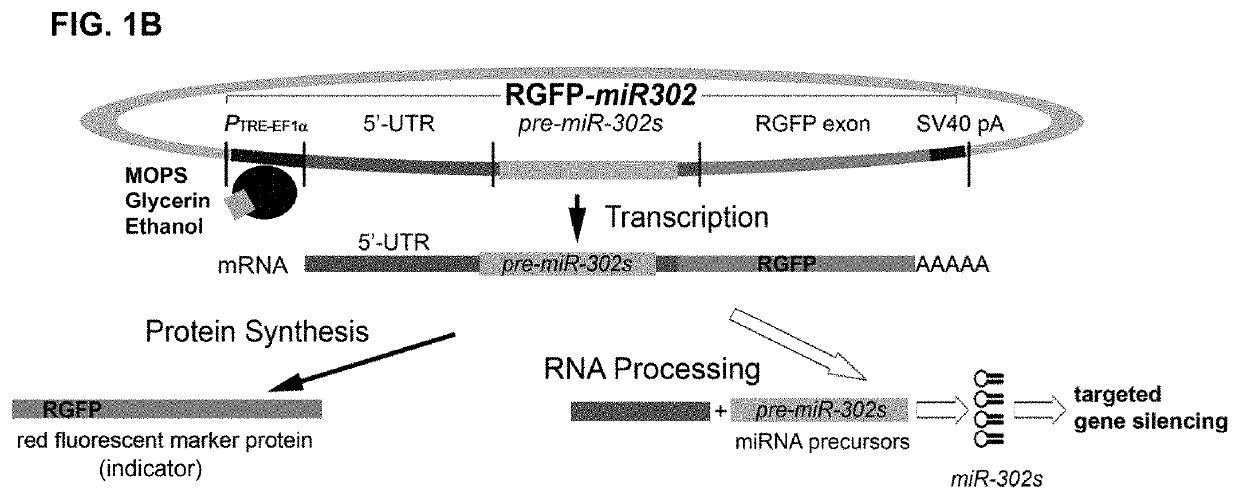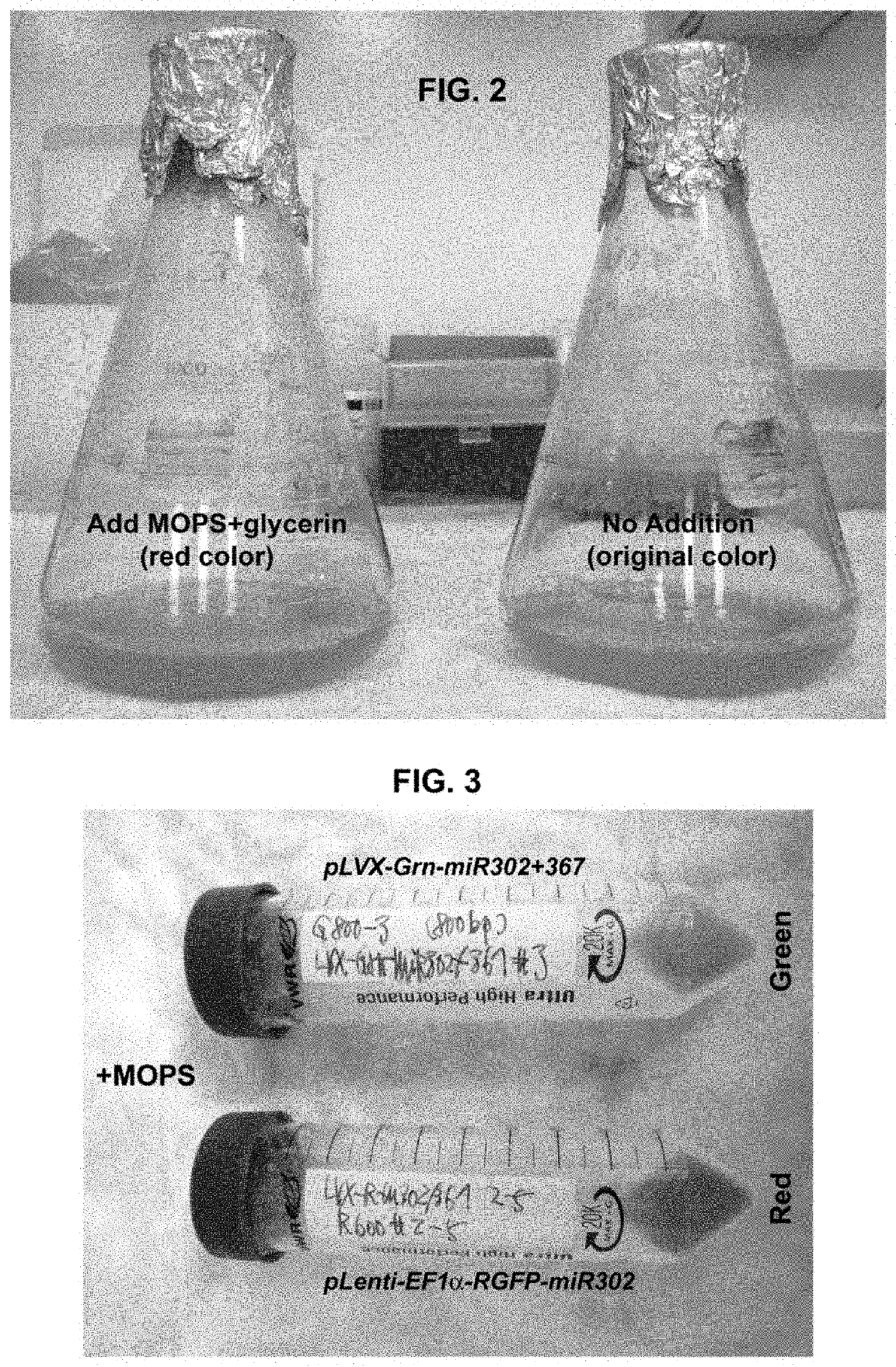A composition and method of using mir-302 precursors as Anti-cancer drugs for treating human lung cancer
a technology of mir-302 and precursors, which is applied in the direction of drug compositions, antinoxious agents, nervous disorders, etc., can solve the problems of unclear whether these previously found tumor suppression functions of mir-302 can be directly used, the pathological causes of lung cancer are complicated, and the associated applications cannot determine this possibility
- Summary
- Abstract
- Description
- Claims
- Application Information
AI Technical Summary
Benefits of technology
Problems solved by technology
Method used
Image
Examples
examples
1. Bacterial Cell Culture and Chemical Treatments
[0128]E. coli DH5alpha competent cells were acquired as a part from the z-competent E. coli transformation kit (Zymo Research, Irvine, Calif.) and then transformed by mixing with 5 μg of a pre-made plasmid vector such as pLenti-EF1alpha-RGFP-miR302 or pLVX-Grn-miR302+367. Non-transformed cells were normally grown in Luria-Bertani (LB) broth supplemented with 10 mM MgSO4 and 0.2 mM glucose at 37° C. with frequent agitation at 170 rpm, whereas the transformed cells are cultivated in the above LB broth further supplemented with additional 100 μg / ml ampicillin. For chemical induction, 0.5 to 2 ml of MOPS, glycerin and / or ethanol, respectively or in combination, was added into 1 litter LB broth supplemented with 10 mM MgSO4 and 0.2 mM glucose in the presence of 100 μg / ml ampicillin. For negative control, the transformed cells were cultivated in the above ampicillin-supplemented LB broth but without adding any chemical inducer. The results ...
PUM
| Property | Measurement | Unit |
|---|---|---|
| concentration | aaaaa | aaaaa |
| concentration | aaaaa | aaaaa |
| concentration | aaaaa | aaaaa |
Abstract
Description
Claims
Application Information
 Login to view more
Login to view more - R&D Engineer
- R&D Manager
- IP Professional
- Industry Leading Data Capabilities
- Powerful AI technology
- Patent DNA Extraction
Browse by: Latest US Patents, China's latest patents, Technical Efficacy Thesaurus, Application Domain, Technology Topic.
© 2024 PatSnap. All rights reserved.Legal|Privacy policy|Modern Slavery Act Transparency Statement|Sitemap



